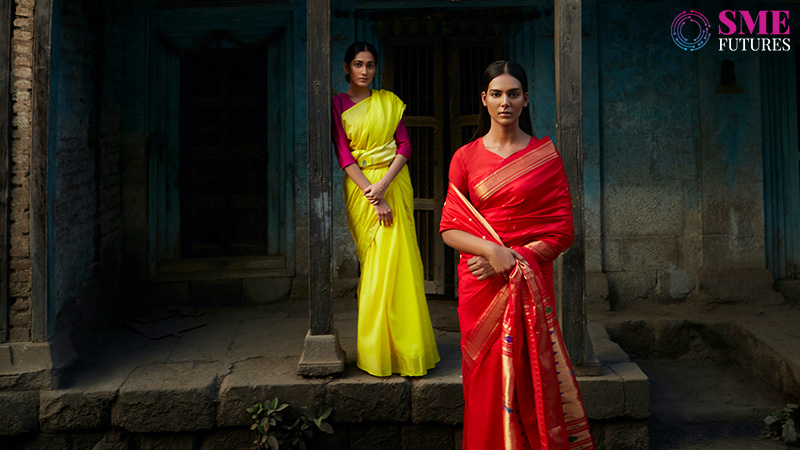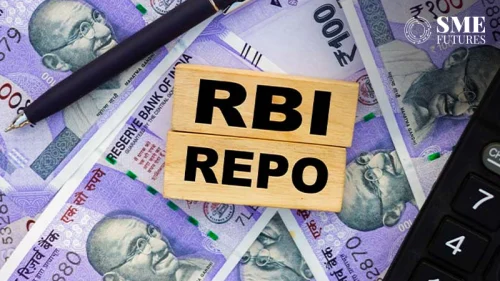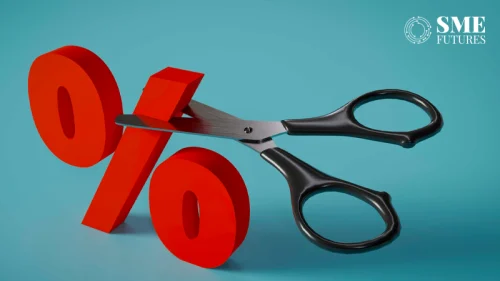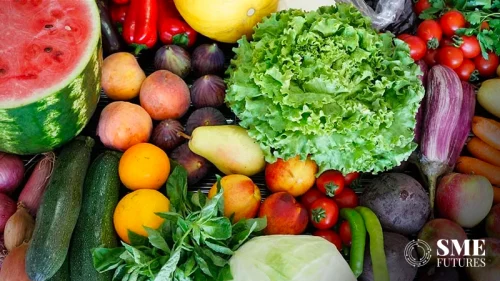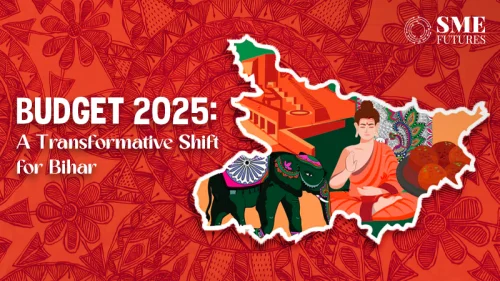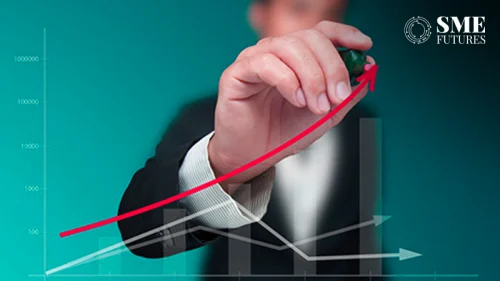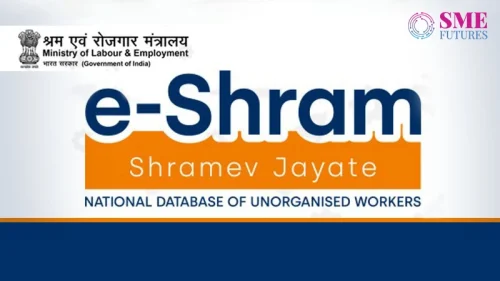The fast fashion industry has been constant in its promise of never-ending trends, versatility, and playfulness. It’s like a kaleidoscope—each time you rotate it, you get new patterns.
Then comes the need to fit in. Which forever has pushed people to get used to consuming ‘disposable’ clothing. This has only been aggravated by the passage of time. But the main issue here is that this fashion comes at a price, someone or something is always at stake—be it humanity, nature or its resources. It’s more often than not detrimental to the environment and for years textile production has been seen as a social issue.
Ethical fashion can be the solution for many of these conundrums.
The concept is on the rise globally and Indians too have accepted it wholeheartedly. But the questions that are still asked are-what constitutes ethical in fashion? Why do we need it? And what does it mean? The answers can be different for different people, as we all have different ethics. Ultimately, it’s up to the consumers.
However, we spoke to a few experts on the subject and tried to analyse what’s going on in the industry and how ethical fashion as a practise is permeating the mindset of the Indian consumers and what has been their response to it so far.
The fashion industry is the culprit
Following closely on the heels of the oil industry, the fashion industry holds the dubious distinction of being the second-largest polluter in the world.
Because this industry is also one of the largest water-consuming industries.
For example, a considerable quantity of fresh water is used in the manufacturing, dyeing, and finishing processes.
Look at these eye-opening statistics gathered by different sources.
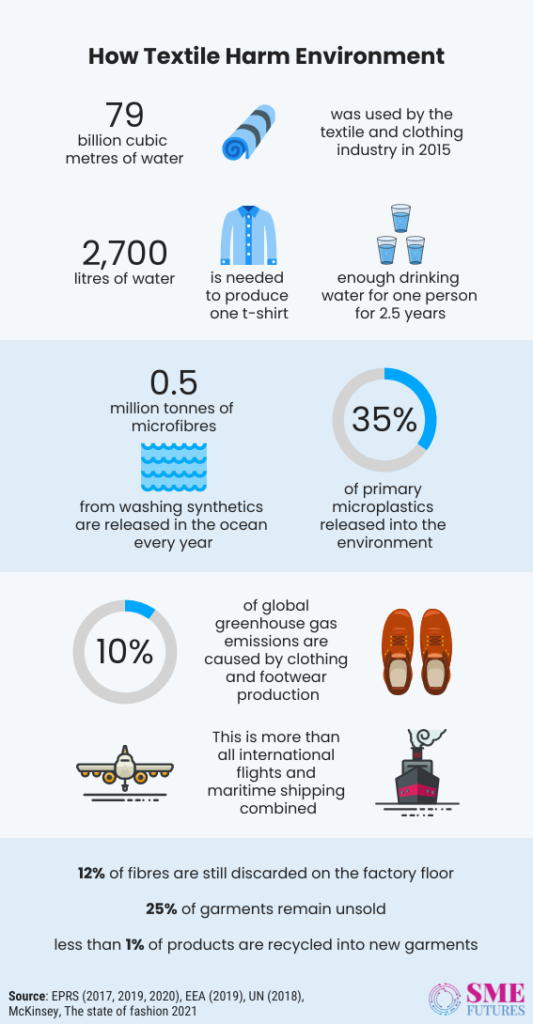
Not only this but the raw materials required to manufacture fabrics and textiles need a lot of water to grow as well. Up to 20,000 litres of water are needed to produce just 1kg of cotton. Also, farmers use lots of chemicals on the land that eventually end up in the environment. Other processes too involve dangerous chemicals that are quite harmful for our entire ecosystem in a myriad ways.
“Water is a fundamental resource for humanity and our entire ecosystem. This can’t be negotiated in a country like India, where most people don’t have access to it in the first place,”
says Rohan Gupta, Managing Director at Gargee Designer’s, a Delhi based luxury men’s wear brand.
“As the industry grows, the environmental damages caused by it increase due to water pollution, soil degradation, greenhouse gases, fibre chemicals etc,” he continues.
Then there is a lot of wastage of clothes. Statistics say that one truckload of clothes is either sent to a landfill or burned every second. Only 1 per cent of clothes are recycled into new ones.
That is why we need to understand that the rate at which the textile industry is exploiting natural resources, is not at all sustainable. And there will be devastating consequences for all of us that are here now as well as for the generations that will follow us. That’s why ethical fashion has come into the picture.
What does it mean?
Ethical literally means moral.
And for several years, it’s been on the minds of the consumers of this ever-growing, ever-changing industry. Due to changing trends, and in a quest to save the environment from the negative impacts of the traditional fashion industry, people are demanding that brands and retailers build their businesses with a conscience. Sustainability too is an integral part of the ethical fashion trend. The catastrophes brought on by COVID-19 from 2020 onwards have only served to further fuel this demand.
In fact, even before the pandemic, several brands had already started taking note of this trend and had begun reinventing themselves with a conscious focus on becoming ‘good’ or ‘ethical’ brands. Companies such as Zara, H&M, Levis and numerous others have already been working on their sustainability manifestos. Many other brands too are taking this route. At the same time, the MSMEs in this sector are doing most of the work. In fact, most of the new fashion and textile enterprises are now built and operated using sustainable ideas and practices.
Agreeing with this view, Gaurav Davda, Head of Strategic Initiatives and Corporate Finance, Jindal Worldwide Ltd comments, “MSME’s play a huge role as most of the capacity outside of the few large players resides with them. Adopting ethical practices will be an evolution for the MSMEs as well as they too have to ensure that they can manage the additional costs in a tight margin business.”
Having said that, the textile experts feel that the debate on the meaning of ethical fashion is endless.
However, for most of them, it means doing business with the stated aim to reduce the negative aftermaths of human practices on the environment. Whereas there are actually no hard and fast rules and regulations defining what it means to be ‘natural’, ‘clean’ or ‘sustainable’.
“The first thought that comes to mind is ‘reduce waste’. And the second is circular economy. I’d like to put my rupee into that voting side,”
says Susan Bhaktul, CEO—Apparel & Textile, Industree Foundation.
Due to her many years of experience in this sector, she has seen the trends changing from fast to sustainable fashion and is a strong advocate of the latter.
“I will buy only ethically produced and ethically manufactured products. I don’t want an animal to have been harmed for this or forced, bonded, child labour being used in making it. And my money is worth it. So, I’ll definitely play the card that my money has the power to change what I value the most,” she says.
For Prachi Saraf, a textile enthusiast and founder at Vyusti, ethical and sustainable fashion is something that benefits everyone on a larger scale. “It is also something which I feel is morally correct,” she says, adding that it is also about the necessary questions which need to be asked. And those questions should start right from the process of procuring the raw materials to ultimately dressing the consumers.
Those questions should be about the impact of this industry on the environment, on the workers and finally on the consumers.
How are we making the products more organic? What artificial processes are being used? What kind of wastage is involved and how does that impact the environment?
For the consumers the question is, are they getting real value for their money?
Next come the questions about the impact on the artisans, about the quality of life that is being provided to those artisans who are making these products, are they benefiting from it in any way?
“All the questions asked above are the basis of every human life and we at Vyusti like to consider everyone as an integral part of the system. Ethical fashion would be one that respects everyone and moves towards a brighter future. A more sustainable one that is not completely dependent on new tech. These are age old techniques which might be out of style now, but in a time of crisis we all go running back to them,” says Prachi.
Davda of Jindal Worldwide tells us that they only work with brands that maintain the highest quality of ethics. For them, ethical fashion is something that the industry players can offer to the end consumers, keeping in mind the intangible costs of that fashion.
“That intangible cost is not the economic cost but the cost towards the environment, the world, and the cost to humanity. This is where we, as responsible industry players, ensure that these intangible costs are kept in control so that our future generations can enjoy fashion,” avers Davda.
Going further in the discussion, Gupta remarks that sustainability is the only way towards forward-thinking in fashion.
“It’s not something that consumers think is ‘well good for you’ anymore in today’s day and age. It’s a demand and reflects your company’s culture. Ethical fashion is both a social and an environmental responsibility in which the environment is what most people focus on for the eco-friendly tag for the animals and the environment,” he asserts.
This description of ethical fashion seems easier to understand, if we go by what the experts are saying. But it is much more than that. Social responsibility is one aspect of it, which people are taking quite seriously. It is about the working conditions, exploitation and fair trade in the fashion industry. And the industry is tackling these issues by adopting more appropriate worker policies, ensuring a better workplace environment, community development etc.
And ultimately it has become another market segment within the fashion or textile industry combined.
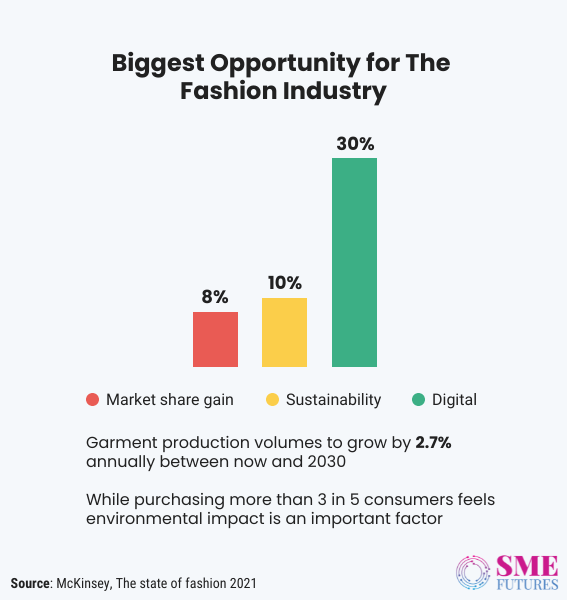
What does the market look like?
According to most of the research on this sector, this market is growing fast. As awareness spreads about the adverse effects of the textile and fashion industry on the environment, it is encouraging consumers to go green.
Bhaktul agrees, saying, “I think now the brands are very conscious about it and the manufacturers have started believing in it, which is a very right thing to do. Earlier, the manufacturer would do it only because the brand was coming or watching. But now it’s getting into the DNA of the manufacturer, who is saying that you don’t lose anything by doing the right thing.”
Research and Markets analysis says that the global ethical fashion market could grow from $4.67 billion in 2020 to $5.84 billion in 2021 at a compound annual growth rate (CAGR) of 25.1 per cent.
This growth is also on account of companies resuming their operations and adapting to the new normal while recovering from the impact of the COVID-19 pandemic. The market is expected to reach $8.3 billion in 2025 at a CAGR of 9 per cent.
The Indian textile industry too has come to terms with the ethical practices in manufacturing and is continuously working towards adopting them.
Bhaktul says that now brands are super-focused on eco-friendly materials. They are also focused on the transparency and traceability of a value chain.
“While awareness is there, more specifically with the bigger brands, I’m sure it will catch on. Right now, the consumers, the young people are very aware. When I look back at when I was 16-17, I wasn’t aware of all this. Today, a teenager knows exactly what’s happening in the market. They know there are some brands who have some unethical ways of producing, so they don’t buy it. India definitely has a lot of potential. It’s getting very aware and that’s a positive sign,” she says.
Whereas Davda prefers to look at it as a necessary change.
“Given how widespread ethical violations are discussed globally, we see what’s happening with China and Pakistan and the bans and surcharges enforced by the western countries on them,” he says.
According to him the end customers and millennials are demanding ethical products, and the brands have no choice but to respond.
But given the sector’s competitive intensity and its thin margins, the unorganised section within it tends to ignore ethical practices while manufacturing fashion fabrics. “Large players such as us are the trendsetters as far as ethics are concerned,” says Davda.
The brands we spoke to strongly feel the same and they too are involved in and committed to implementing the ethical fashion processes required to resolve the issue, in their own ways.
At Jindal Worldwide, the company is setting ethical benchmarks, right from their water discharge plants, their waste recycling plants and their adoption of solar energy. “We are ensuring the highest standards. Also, we ensure that our ecosystem does not unfairly take advantage of the lesser privileged and we have zero tolerance for any wrongdoing towards fundamental human rights. The same cannot be said about some other large manufacturing countries,” Davda tells us.
The Industree Foundation, which mostly works with rural women workers, skills them at different levels—from apparel making to soft skills to financial literacy. Moreover, they encourage a circular economy in manufacturing. Bhaktul adds, “We want to avoid waste. So, with the end bits, we make bags and sanitary napkins for rural women, and we encourage the use of paper for packaging. No plastics at all.”
The foundation recently launched an online platform called Flourish to showcase and market these products. “It was started with the simple purpose of conscious consumption and for making socially and environmentally sustainable products from around the world available to everyone,” she says.
On the other hand, Vyusti’s founder Saraf says that her company firmly stands for ethical and sustainable fashion. “We at Vyusti do not believe in power loom products. They are made with locally available yarn on a charkha and not in a factory, causing bare minimum wastage. We use vegetable dyes, and our weaving process is purely hand-woven. While they are much cheaper, they do cause a certain amount of damage to the environment as well,” she tells us.
Continuing further, she informs us that through their Vyusti Trust, the weavers get the benefits that they are entitled to. “Vyusti is trying to make sure that the weavers face no issues about their basic needs like food, shelter, groceries, medication and education. Our customers get heirloom luxury pieces, which are organic, sustainable and completely ethical. These products can be passed down through generations,” she asserts.
Gargee also plans to switch over to fabrics that release minimum organic microfibres and do not cause as much harm as the synthetic microfibres do. “We plan on incorporating more eco-friendly fabrics and techniques into our production. Right from using materials treated by a more sustainable method to ensuring our production process stays as close to zero waste as possible. We intend to design garments, keeping in mind the treatment and washes a fabric needs before being stitched into a designer garment and selecting materials that do not cause as much water pollution as conventional fabrics do,” Gupta informs us.
Another factor that is creating awareness in India is social media. It has become an indispensable tool and brands are using it to share their brand stories, to create communities, and for doing business. Which has resulted in making this a fast-growing market.
On this, Saraf comments, “Fast fashion has taken over so much of the market that the Indian fashion industry is divided into Indian wear and Western wear. But there is a growth towards a sustainable future, where everyone is trying to provide more ethical fashion. While there is scope for many changes, the Indian wear segment seems to be incorporating those at a faster rate when it comes to ethical fashion.”
Who made my clothes?
That is what the consumers of today are asking.
From the hippie revolution of the 60’s to the current simple organic fashion trend, the consumers have always been at the core of every trend. And now they want to make better choices. They now enquire about terms like carbon footprint and fabric traceability. They ask various questions about the sustainability and the natural origin or source of the products that they consume.
“Yes, people do ask about it in simple and genuine ways. Often, the apparels are for a special occasion. And they don’t want to mar that occasion by choosing something that is harmful for the environment and the world at large. It is also something that you can flaunt or communicate about if you know that there will be many eyes on you,” Gupta explains while talking about his own experiences.
Weighing in on the topic, Bhaktul tells us about one of her encounters with Mira Kapoor, the wife of actor Shahid Kapoor. She says that Mira was the type of person who would buy new stuff for every occasion, to the extent that there was a new purchase almost every evening. “But now she has streamlined her habit. She now buys to mix and match and is instilling in her children that less is actually more,” she reminisces.
She is somewhat like Emma Watson, who once said that it was not enough for her anymore that it was a beautiful item. She wanted to know who made it and where it came from.
Continuing with her comments, Bhaktul says, “We need such brand ambassadors. We need a lot of exposure and awareness and articles like this will definitely help people to know that ethical fashion and buying can get into your DNA.”
Internet statistics reveals that on Twitter, the hashtag #SustainableFashion has been growing rapidly, a conversation that has been largely driven by women (71 per cent) and 18-24-year-olds (52 per cent), indicating that Generation Z and the millennials are increasingly concerned about environmental and social causes.
While on Instagram, #Sustainable has grown five-fold in the last 3 years, and consumer attitudes have become increasingly eco-conscious, DIY-oriented and focused on wellbeing as opposed to high-end glamour, partly due to the pandemic.
With eco-friendliness and sustainability in trend, at least 73 per cent of global consumers are willing to change their consumption habits to reduce their personal impact on the environment, states a Nielsen survey. While a recent McKinsey survey found out that more than three in five consumers feel that environmental impact is an important factor in making purchasing decisions.
Having said that, market gurus feel that Indians are ready to embrace ethical fashion in their daily lives but there is plenty of knowledge about it that is yet to be disseminated and imbibed.
“Absolutely yes. Indian consumers, while being price sensitive, realise the impact on the entire ecosystem and how this will adversely affect our future generations and are warming up to ethical fashion. It is only a matter of time until Indian customers too will start demanding it like those in the west do,” Davda says.
Subsequently, with all the chatter going on, there has been a trend of people breaking up with their long used unethical fast fashion brands. Consumers are voraciously consuming content about eco-friendly clothes. They want to associate with the story of a brand and then make it a part of their skin. There are even research guides around that rank big fashion companies based on their ethical practices.
“There is a visible and rising trend of consumers who are likely to pay more for a sustainably made product and it is growing exponentially worldwide. Habits are changing and technology is increasing for the attainment of a better world. Ethical fashion is a celebration and a matter of pride for both the brands and the consumers. Pride is a powerful feeling that you can give to your customers,” says Gupta.
With the change come the challenges
There is so much to discuss when it comes to the challenges in the ethical fashion market, as it is still a niche segment in India.
The experts suggest that at the manufacturing level—labour, cost, design, and quantities are the areas where the manufacturers face the most setbacks. And the pandemic has only compounded these issues, along with all things digital.
“Of course, factor in the cost associated with maintaining the highest standards of ethical manufacturing. That is something to think about deeply while trying to battle cost and demand pressures. Larger players have to be the leaders in setting the trend,” says Davde of Jindal Worldwide.
The biggest challenge however is to change the mindset of the people.
Buying ethical clothing is not a cheap affair. What pinches people most are the high price points. Check on any website and sustainable…sometimes tagged as ‘desi’ collections are mostly quite expensive.
Bhaktul says that the first thing that most people assume about ethical fashion is that it should cost less.
But that is not how it works.
She explains, “I had this issue of someone saying that your products should be costing less because you’re working with rural women. They don’t understand that this is the wrong concept. The money dictated by the law of the land for the minimum wage etc, is going to that person. So, there is going to be no reduction in prices. In fact, you should be paying more because you’re buying an ethical product.”
But at the same time, the opposite mindset that if it is ethical, it is going to be expensive, is also not correct.
You just have to be on par with a product from another brand.
“Once you get out of that, you’ll see how easy it actually is to be ethically producing stuff. According to the law of the land and humanity, you’re doing the right thing,” says Bhaktul.
And nowadays, people like to stick to the idea that their money is being well spent and will actually be used to help someone.
“The only difference is that you know that with an ethically made product the money is going to the right place and person, and there is no harm to either the environment or to the animals or to the climate and also to yourself when you’re using it,” Bhaktul further says.
New ideas everywhere
There is definitely a heightened and growing awareness about ethical fashion in the global markets.
In India, it’s a niche segment still but more and more start-ups are coming up that will take this trend forward and invest in it. The experts meanwhile say that big global names like H&M, Marks & Spencer and Levi’s are creating a lot of awareness about this trend. While at the same time they are also helping in creating new business models and are generating more fresh and new ideas for the ethical fashion business.
For example, M&S has a counter where you can give away clothes, which eventually go to Oxfam. There the clothes are then refurbished and resold. So, the awareness is definitely growing. And India being a huge export-oriented country, is being exposed to those kinds of markets around the globe.
Citing her own experience, Bhaktul tells us, “In the recent past, I’ve come across a lot of people talking about this repair, rental and resale model of working, where clothes are given a makeover, by adding embroidery or some value to the garments. Then either you take them back or they put them up for sale.”
According to her, the only thing is that in India, culturally, there is an aversion to ‘second-hand’ things. “People don’t mind hand-me-downs but that is only within the family and friends. Also, there are apprehensions that if something is second-hand, then there is no surety about whether it is still usable and wearable or if it has been washed well and cleaned properly etc. I think India is heading towards it. There are organisations that work on second-hand items. For instance, there is a small organisation called Twirl, which is looking at this concept,” she tells us.
There is another important aspect to it that cannot be ignored.
Shopping for ethical clothing is one thing, but shopping ethically is the new concept which people are now getting interested in. It can also be called the concept of minimalism.
One of the basic principles of shopping ethically means not shopping at all unless absolutely necessary, says Gupta. Instead of buying something new when a product snaps, it is better to explore ways to repair and restyle it, rather than get rid of it, is the essential thinking behind this concept.
“We can create more impact forward by taking care of our clothes rather than worrying about how they were made. India at least has a tendency of avoiding animal cruelty in most of its cultures. Whether or not this concept is adopted is a different question,” he says.
Then there is a massive digital movement that’s assisting businesses in their recovery from the damaging impact of the pandemic. By going digital they can keep up with the trends, where sustainability seems to be on an upward surge. Also, the digital movement is helping people in getting their voices heard when they talk about the exploitative conditions in which they find themselves.
Going ahead, less will be more
Fashion is an important part of our culture, but this idea has always been up for debate. However, fashion is now an integral part of the conversation around ethical living and sustainable practises.
And the genesis of this conversation lies in our homes.
“While I, as a child, didn’t know anything about it, today, we’re telling our children that they should wear a T-shirt for two years, until they outgrow it. I believe, ethical buying will definitely become a trend someday soon. If we can get our working things together and the flow starts again, this repair, rental and recycle product trend will also catch on,” says Bhaktul.
But a lot still needs to be done and celebrities can assist in making this trend more popular as we Indians really look up to them.
If we can persuade more celebrities to adopt ethical fashion and discuss about it openly, more so now as we live in a massively connected world due to the internet, the dissemination of this idea will be far reaching and more impactful. “Spreading awareness about the fact that ethical buying is neither cheap nor expensive and this is how it is done, is imperative. And you have the power of the rupee you hold to effect this change. We’re definitely on this journey,” says Bhaktul.
When you look at India, its textiles and garments industries are some of the oldest industries and its biggest money earners as well. In 2018-19, they contributed 2 per cent to the GDP, 12 per cent to export earnings and held a 5 per cent share of our global trade.
And the growing ethical fashion market is creating new territories brimming with opportunities and fresh, new business models. A market analysis says that garment production volumes are predicted to grow by 2.7 percent annually between now and 2030, globally.
“Unlike other industries where everyone is trying to implement ethical and sustainable practices and where the people working in them might feel like they are being pushed down, the ethical fashion industry is not perceived as such. In fact, people are more receptive to its ideas and its trends are widely accepted by most. Ethical fashion is here to stay for sure,” says Gupta.
Global awareness about ethical fashion and ethical buying is growing rapidly. So, for the Indian textile manufacturers, both private and governmental to stay relevant, it’s imperative that they understand that the future lies in ethical practices. And India needs to jump on this bandwagon now, as it is going to be an immense leap forward for its economy.

